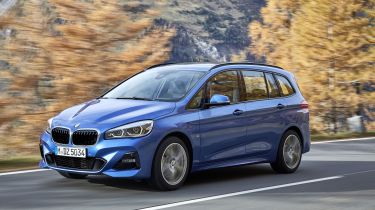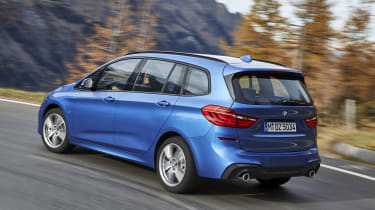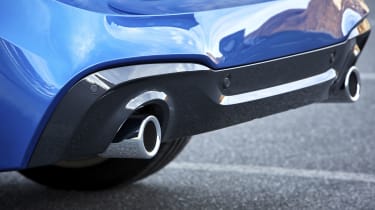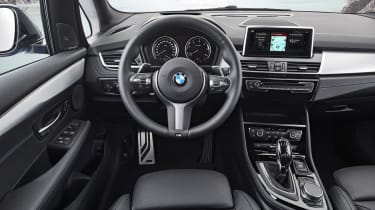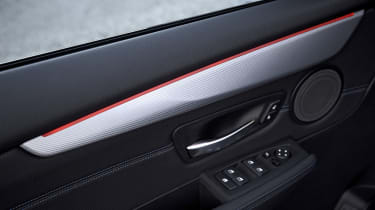BMW 2 Series Gran Tourer 2015 review
Seven-seater BMW 2 Series Gran Tourer is practical and good to drive
No seven-seat MPV this side of a Ford S-MAX is quite so much fun to drive, and despite the BMW badge, the two are fairly similarly priced. The Ford does have more space inside, and is arguably prettier too, but as a first foray into the seven-seat MPV market, the 2 Series Gran Tourer deserves to succeed.
Purists were open mouthed when BMW announced the 2 Series Active Tourer last year. Not only was it BMW’s first-ever MPV, it was also its first model to be equipped with front- rather than rear-wheel drive.
Now, however, they’ve gone one step further by adding a pair of rear seats in the boot – to make this the first seven-seat, front-wheel drive MPV to wear the BMW badge. Prices start from £25,645, and there’s a range of three and four-cylinder petrol and diesel engines.
• Best seven-seater cars to buy
While on the face of things, this 2 Series Gran Tourer may not look very BMW, it’s actually an extremely important car for the brand. The car has been officially on sale since the beginning of June, and UK dealers have already taken more than 600 orders. The factory is at full capacity, and if you want a petrol model you’ll be waiting anything up to eight months for it to arrive.
So how does this entry-level diesel stack up? In SE trim it’s the cheapest Gran Tourer you can buy, while this better-specced Sport model adds £1,250 to the price. It’ll do 68.9mpg and emits just 108g/km of CO2 – meaning it sits one tax band above the five-seat version, costing just £20 per year to tax.
Used - available now

2023 Land Rover
Range Rover Evoque
16,327 milesAutomaticDiesel2.0L
Cash £24,920
2022 Peugeot
5008
3,424 milesAutomaticPetrol1.2L
Cash £26,199
2025 Volkswagen
Touran
16,670 milesAutomaticPetrol1.5L
Cash £22,513
2023 Vauxhall
Corsa
25,107 milesAutomaticPetrol1.2L
Cash £15,540But while running costs are of course a huge priority for cost-conscious family car buyers (which will make up 60 per cent of Gran Tourer sales) it’s practicality that matters most.
Open up the standard-fit electric tailgate and you’ll reveal a 145-litre boot. That’s somewhat short of the 265-litre boot you’ll find in the new Ford S-MAX and the 300 litres on offer in the Volkswagen Sharan, but it does allow you to transport a few soft bags with all seven seats in place.
Things improve with the third row folded flat, uncovering 560 litres and a big square opening, or 720 litres with the middle row slid forward. Fold all five rear seats flat (the middle row is electrically operated as standard) to uncover 1,820 litres – 477 litres short of the Sharan but 31 litres shy of the Citroen Grand C4 Picasso. All UK cars come with seven seats – including three ISOFIX child seat points – with no five-seat option planned for the foreseeable future.
Space up front is good, and just like the revised 1 Series, all 2 GTs come with BMW’s Extended Storage package, which adds various nets, cubbies and tie-down points dotted around the cabin. Tray tables are standard in row two, and you can take them out to make room for specially designed iPad holders if keeping the kids quiet is a top priority.
Behind the driver and front seat passenger you’ll find enough headroom for a six-foot adult, though you’ll need to slide the seats right back if you want adequate knee room. Doing so dramatically reduces space in the third row, meaning there’s only enough room for kids on longer journeys. We tried it with seven reasonably-sized adults on a short trip, and although it was a bit of a squeeze, no one required corrective surgery after getting out.
All cars come with 16-inch alloy wheels, DAB radio and sat-nav, as well as the powered bootlid, climate control and rear parking sensors. Safety is key, too, and BMW will hope adding Active Guard – including city brake – will ensure the Gran Tourer gains the same five-star Euro NCAP rating as the Active Tourer when it is tested in a few weeks.
Our Sport-trim test car adds some worthwhile details including larger 17-inch alloy wheels and front sports seats, as well as contrasting red or blue stitching for the dash. Quality is good, and all cars come with logical and easy to use iDrive infotainment system.
On the road, the 2 Series Gran Tourer is right up there with the best in class to drive. Nothing this side of an S-MAX matches it for dynamics, and despite having just three cylinders this tiny 1.5-litre diesel engine feels punchy enough in-gear.
It feels faster than its 0-62mph time of 11.7 seconds suggests, and thanks to its firm but not uncomfortable suspension, can corner remarkably well, too. Our car did have the £390 electronic dampers, but even those without belie their bulk in a way few MPVs can, with plenty of grip and very little body roll. The larger four-cylinder 220d is expected to be the big seller thanks to its mix of performance and running costs, but as an entry-level to the range, this 216d isn’t to be sniffed at – especially when you consider the 220d costs more than £30,000.

